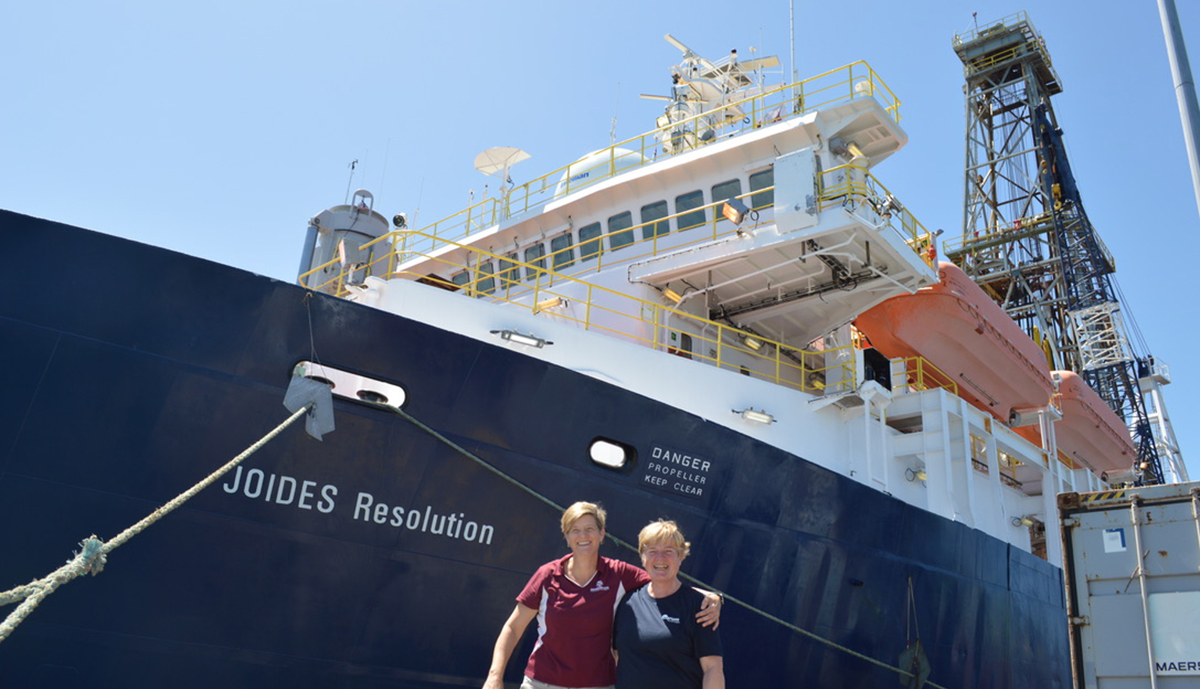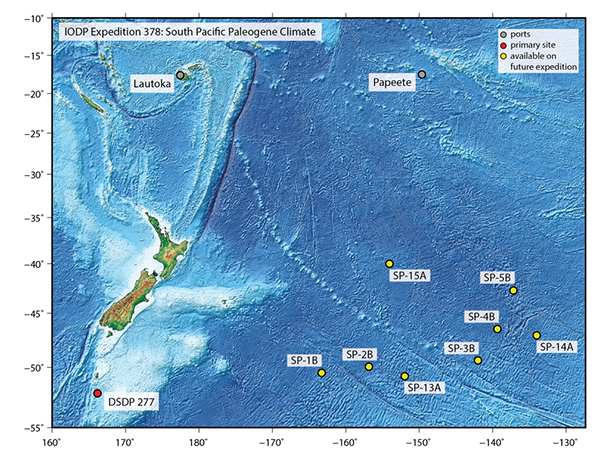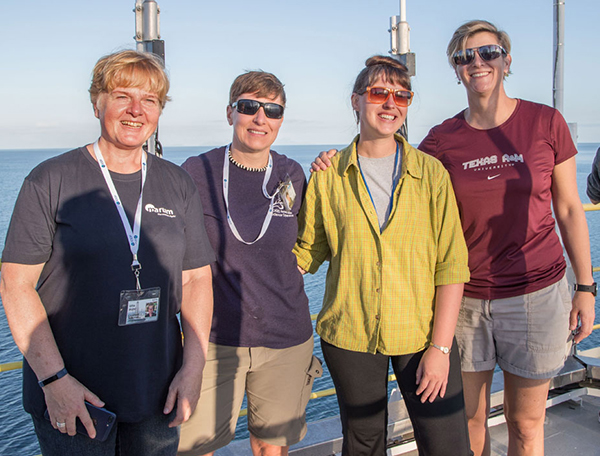Co-Led By Geosciences Dean, IODP Expedition Studies Ancient Warm Climate Clues In South Pacific
Dr. Debbie Thomas is serving as co-chief scientist of the international expedition.
Jan 14, 2020

When the Earth endured extreme warmth in the past, how were environmental conditions, ocean temperatures, ocean circulation, and wind patterns impacted?
That question is actually answerable, and the key lies in ancient records at the bottom of Earth’s oceans: layers of sediments below the ocean floor.
Expedition 378 of the International Ocean Discovery Program (IODP), aboard the JOIDES Resolution (JR) research vessel, began Jan. 3 from Lautoka, Fiji, and is investigating the record of Cenozoic climate and oceanography in the southern Pacific Ocean.
Dr. Debbie Thomas, dean of the College of Geosciences at Texas A&M University, and Dr. Ursula Röhl, from the MARUM - Center for Marine Environmental Sciences at the University of Bremen in Germany, are serving as co-chief scientists of the “South Pacific Paleogene Climate” expedition, which will conclude Feb. 6 in Papeete, Tahiti.
“Expedition 378 operations will recover the sediment sequences from a site south of New Zealand critical to scientists’ understanding of high-latitude environmental conditions, ocean circulation, and wind patterns during a time in recent earth history characterized by extreme warmth,” Thomas said.
IODP is funded by the National Science Foundation and other participating countries. IODP coordinates seagoing expeditions to study the history of the Earth recorded in sediments and rocks beneath the ocean floor. The JOIDES Resolution Science Operator (JRSO) operates the scientific drillship, and the JRSO is based in the Texas A&M College of Geosciences. Two of the three IODP ocean sediment core repositories are housed at Texas A&M and the MARUM at the University of Bremen.
Crucial Data For Understanding Climate Dynamics During Past Periods Of Global Warmth
The team will be taking the drillship into the southern Pacific to investigate the record of climate and oceanography over the past 66 million years.
“Expedition 378 will provide unparalleled opportunities to finally fill an information gap in the Southwest Pacific by re-drilling one of the first sediment sections recovered in the region, providing new information in unprecedented resolution and completeness to the study of long-term Cenozoic climate,” Röhl said.


Scientists will target sediments deposited during the very warm Late Paleocene and Early Eocene, including the Paleocene-Eocene boundary, as well as the Eocene-Oligocene transition, to investigate how the Eocene earth maintained high global temperatures and high heat transport to the polar regions, despite receiving near modern levels of solar energy input. Due to a last-minute mechanical issue, the sole operational objective of the expedition is to recover sediments at a location previously tackled in 1973, but incompletely drilled.
The sediments at this location likely include the Cretaceous/Paleogene boundary mass extinction event approximately 66 million years ago.
Investigation of the recovered sediments also will concern the subpolar Pacific climate, oceanographic structure, and biogeochemical cycling of much of the Cenozoic, the current and most recent geological era that began 66 million years ago. Recovered sediments will be used to characterize water masses, deep and shallow ocean temperature, latitudinal temperature gradients, the strength of upwelling, and the strength of the zonal winds to study both the atmospheric and oceanic climatic subsystems.
“IODP Expedition 378 will retrieve important sections that include crucial time intervals for the South Pacific area,” Röhl said. “All efforts will be made to integrate expedition data toward the age of the recovered sediments in relation to time. This namely includes correlating and assigning relative ages of sediment strata by using the fossil assemblages, data on polarity changes of Earth´s magnetic field, and cycles that describe the effects of changes in the Earth's movements on its climate over thousands of years.”
“Dr. Thomas and I are very enthusiastic that such a great group of distinguished early career through senior scientists will participate in this cruise.”
“The sediments we recover will provide critical constraints on ocean temperatures and the carbon cycle for the vast South Pacific, and these data will lead to big leaps in our understanding of climate dynamics during intervals of global warmth,” Thomas said. “It is an immense privilege to sail with the team of world-class scholars, marine technicians, drillers, and ship’s crew!”
Collectively, 12 nations are represented by the shipboard science party.
Follow along with Expedition 378:
Written in collaboration with MARUM – the Center for Marine Environmental Sciences at the University of Bremen, Germany.

